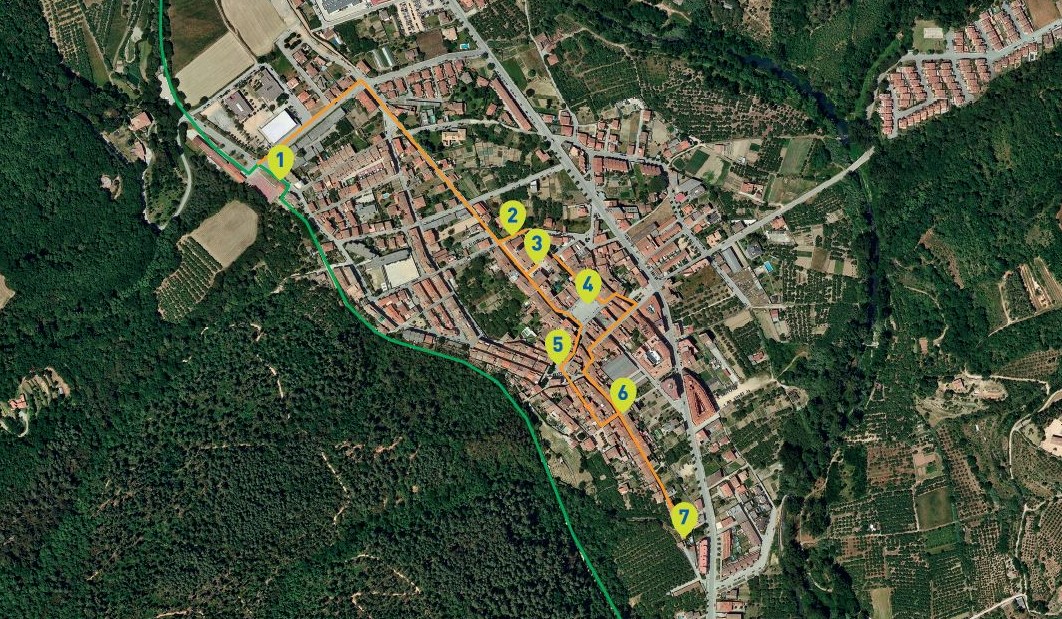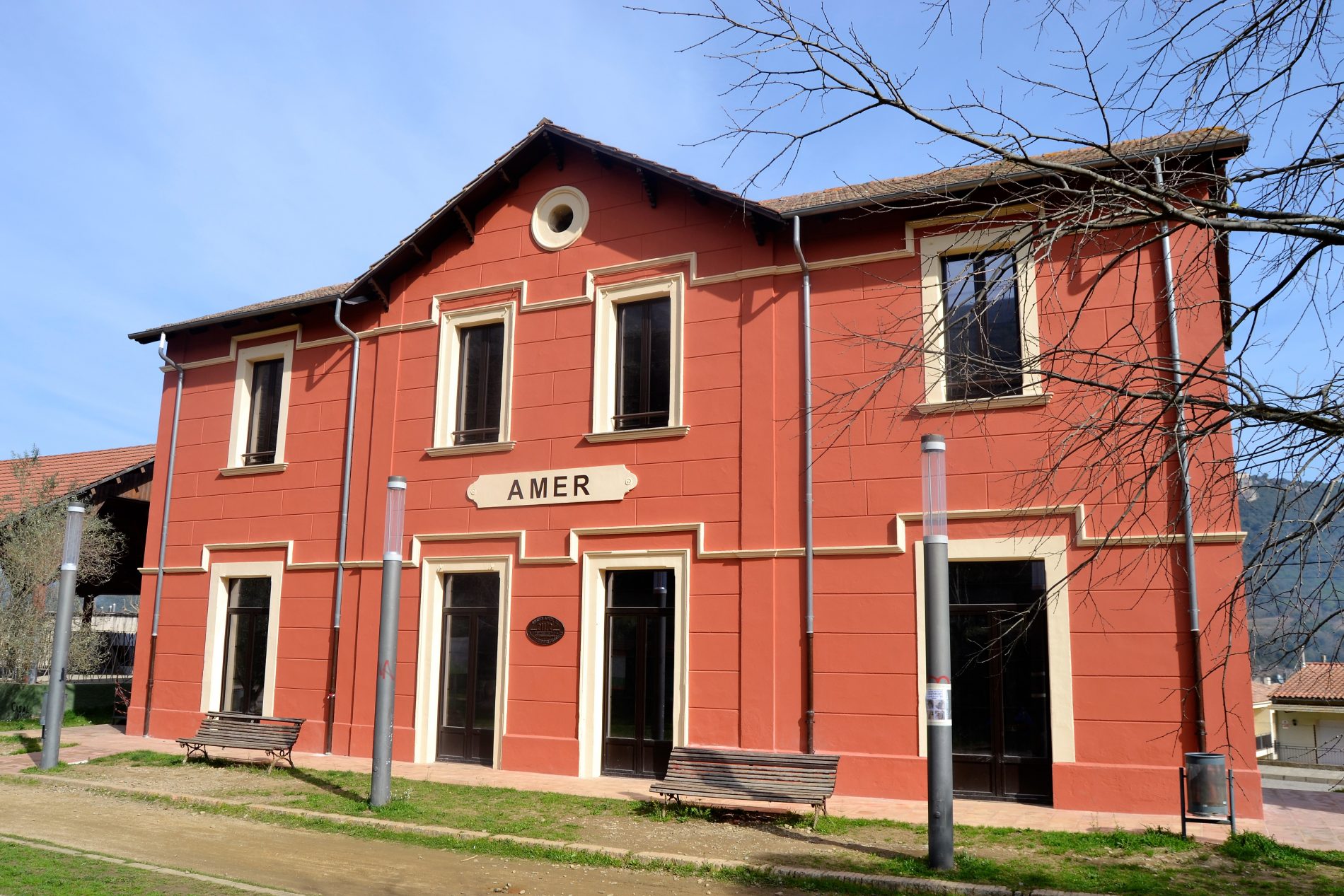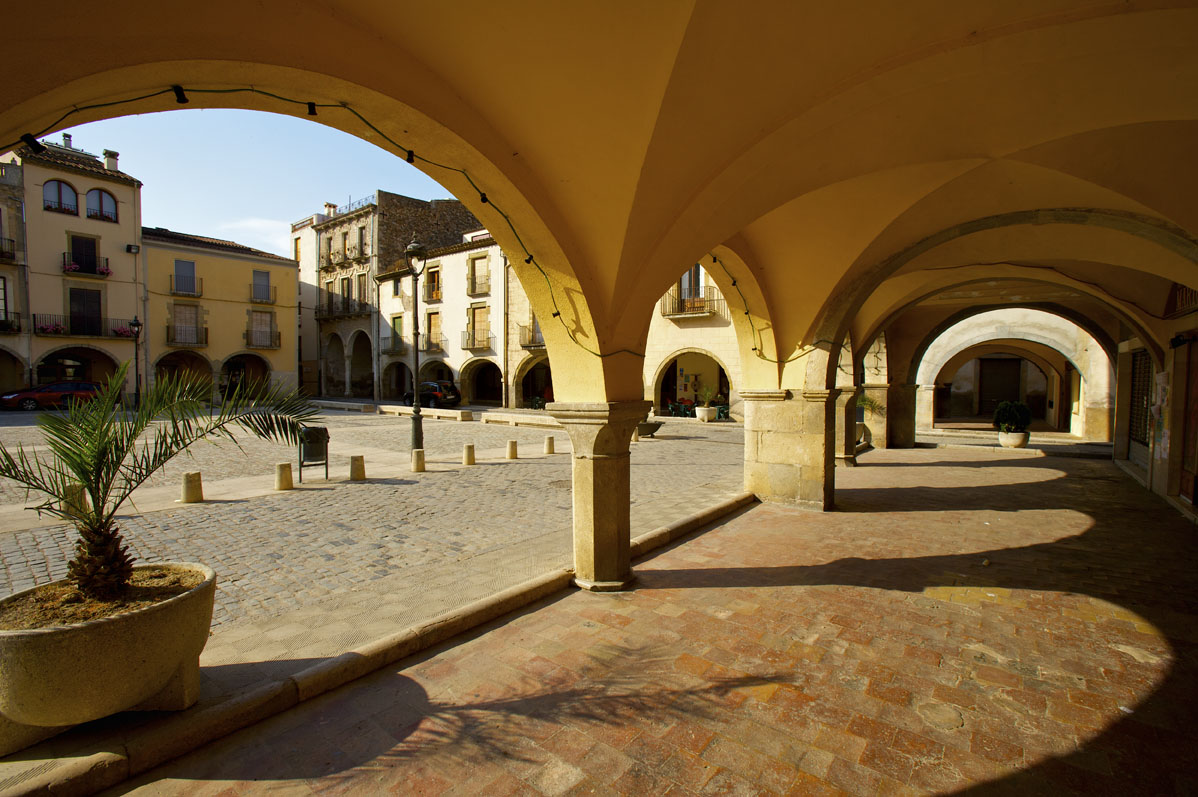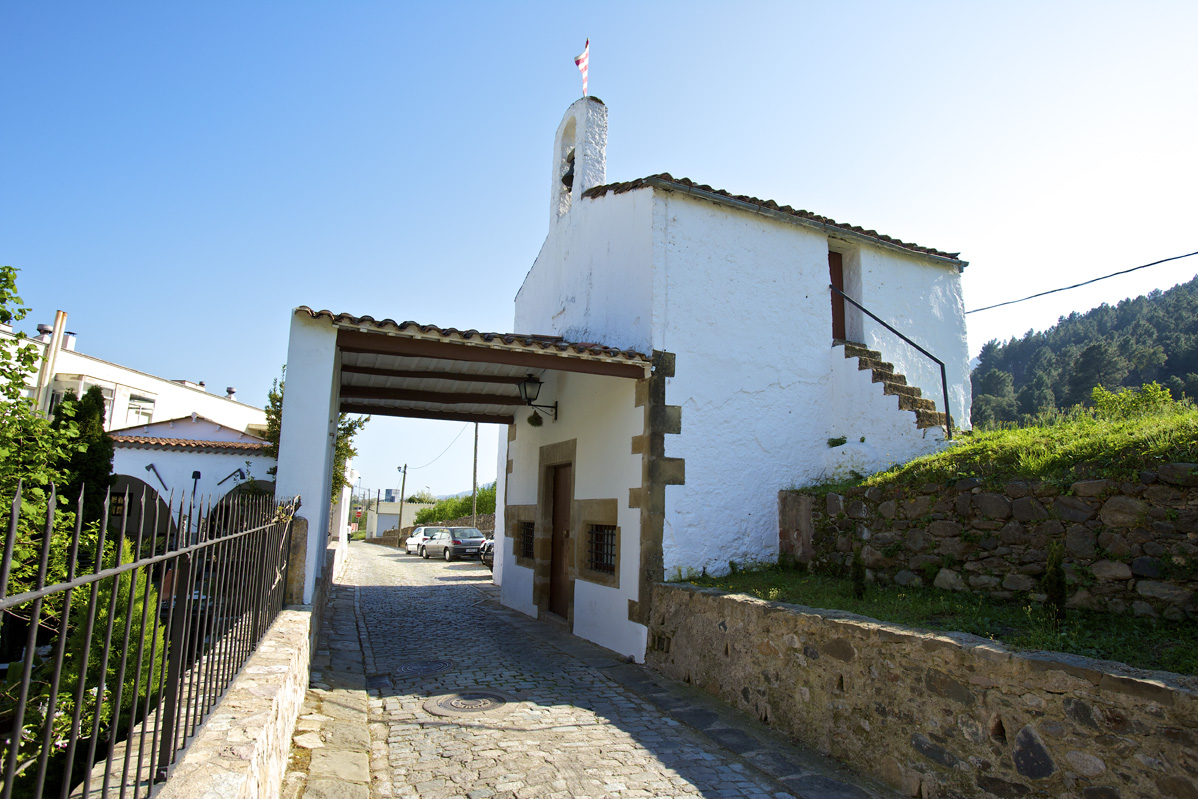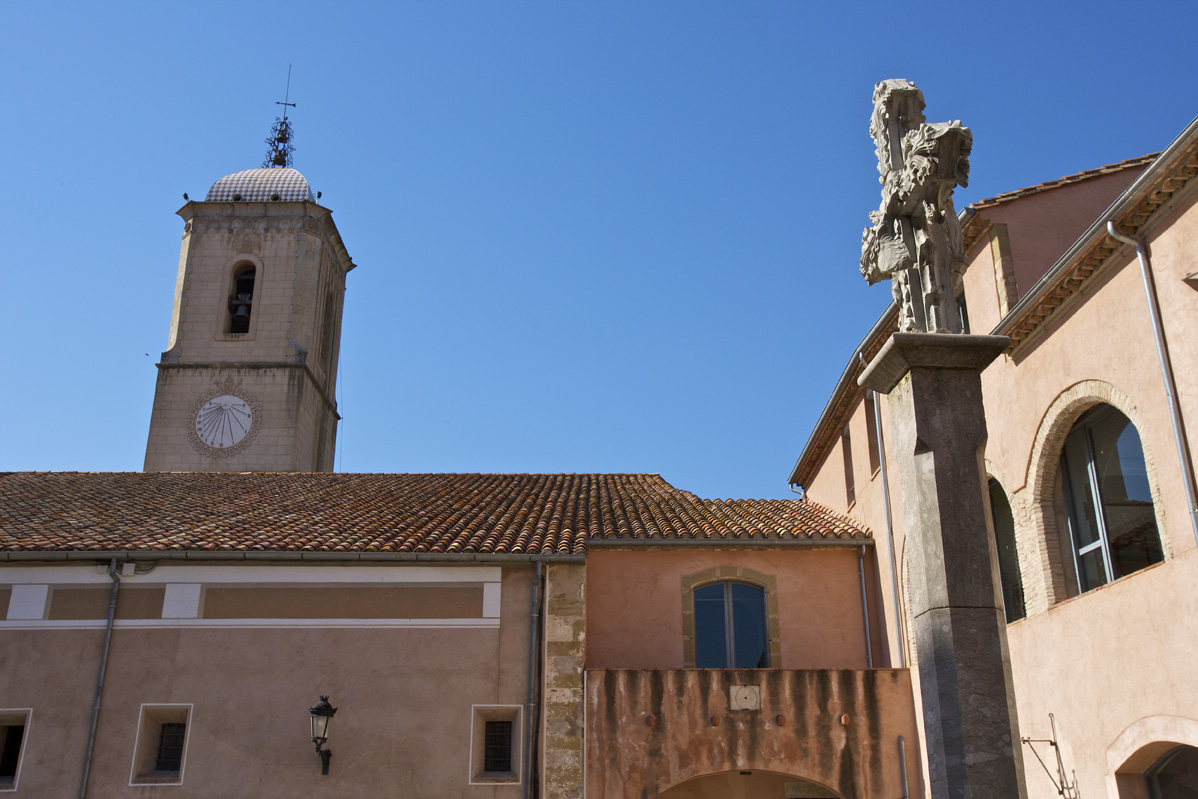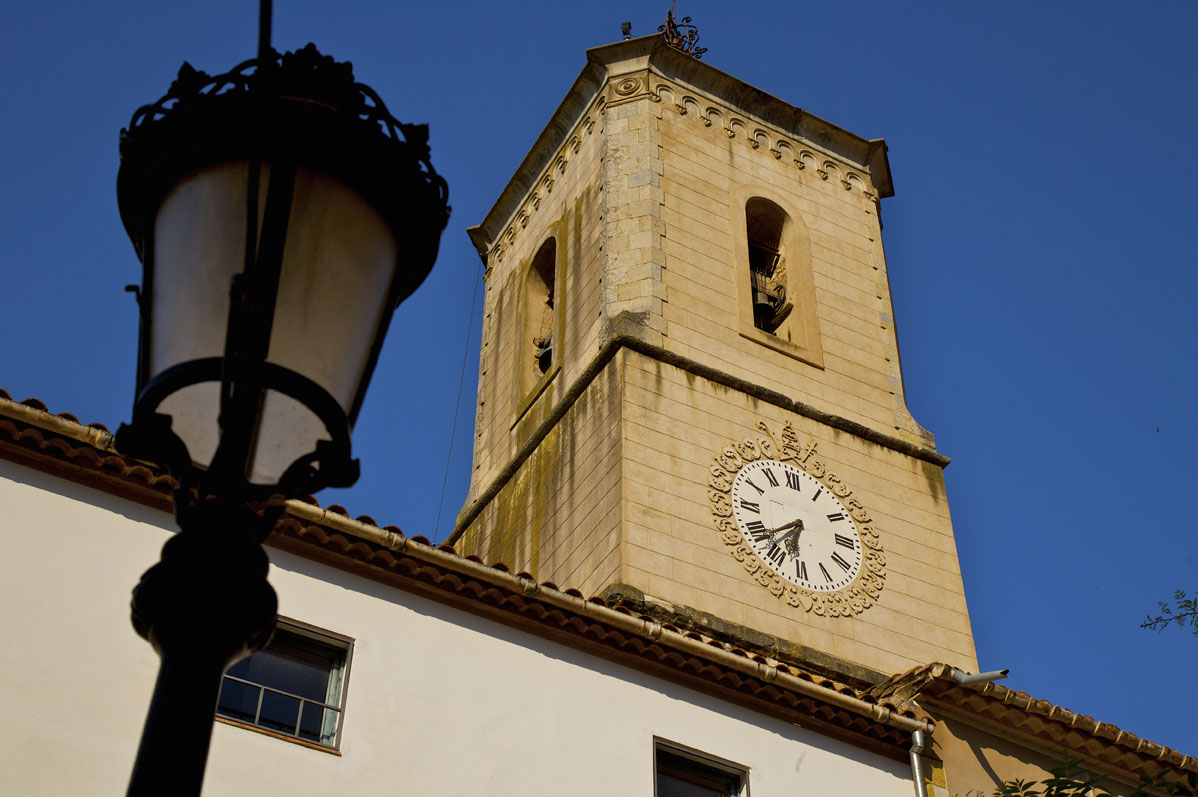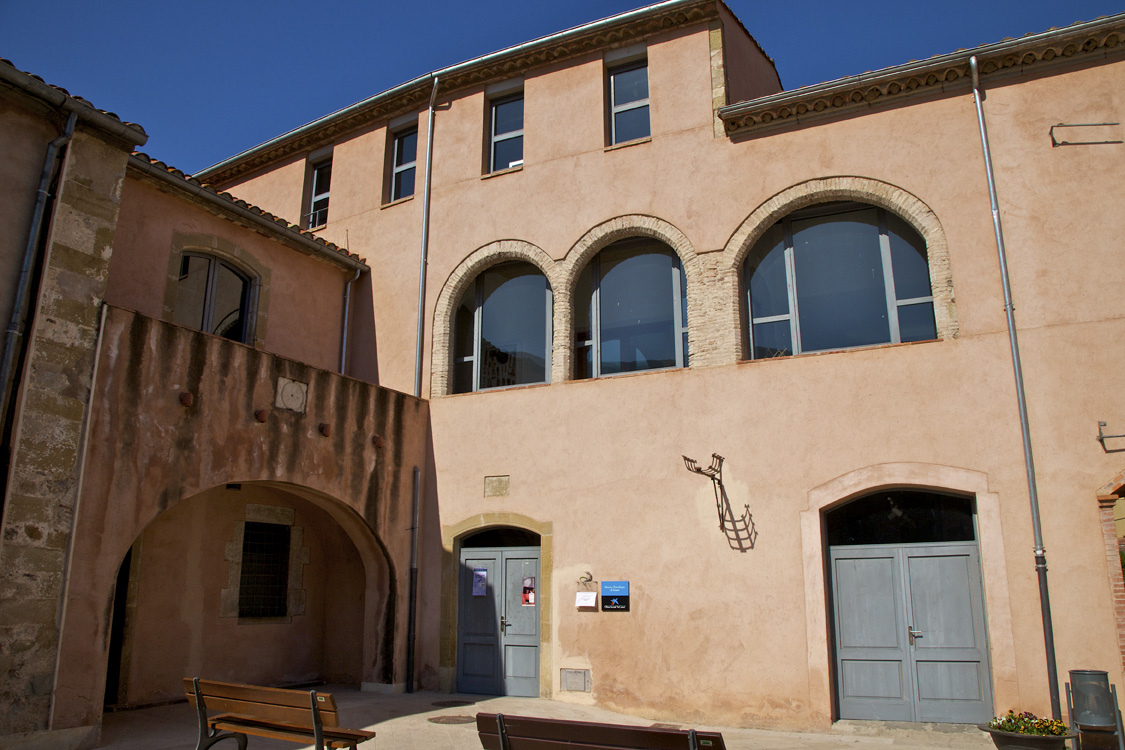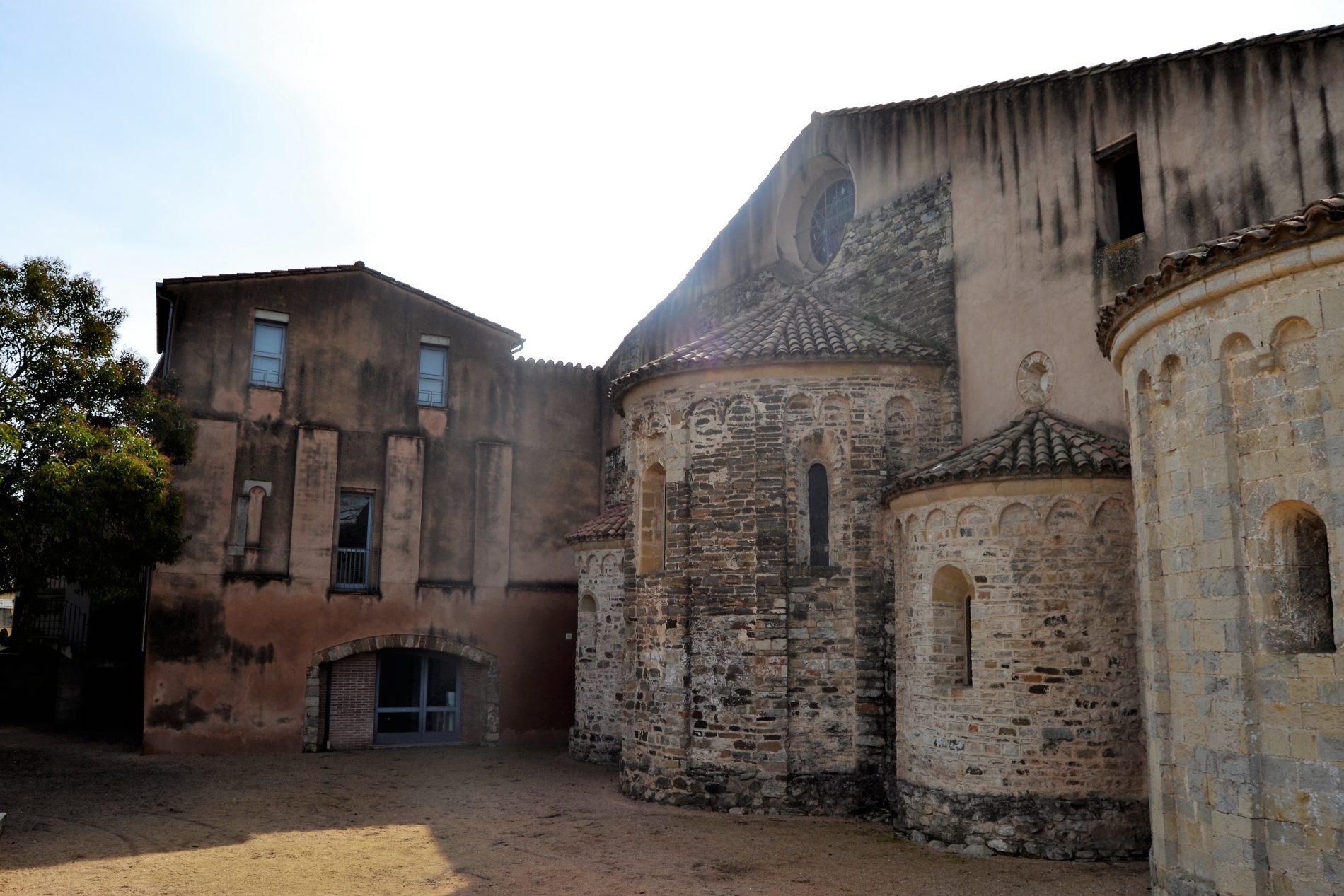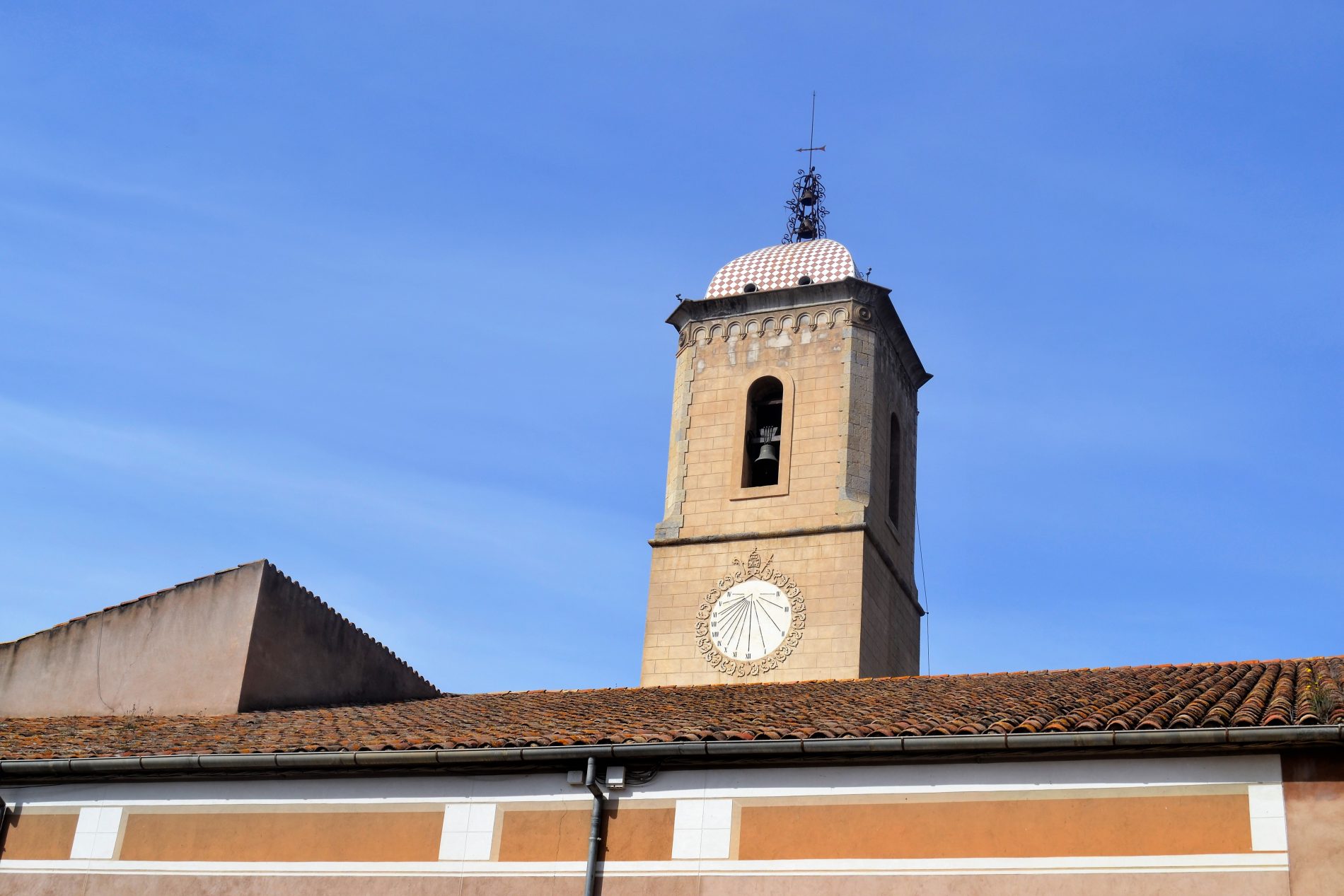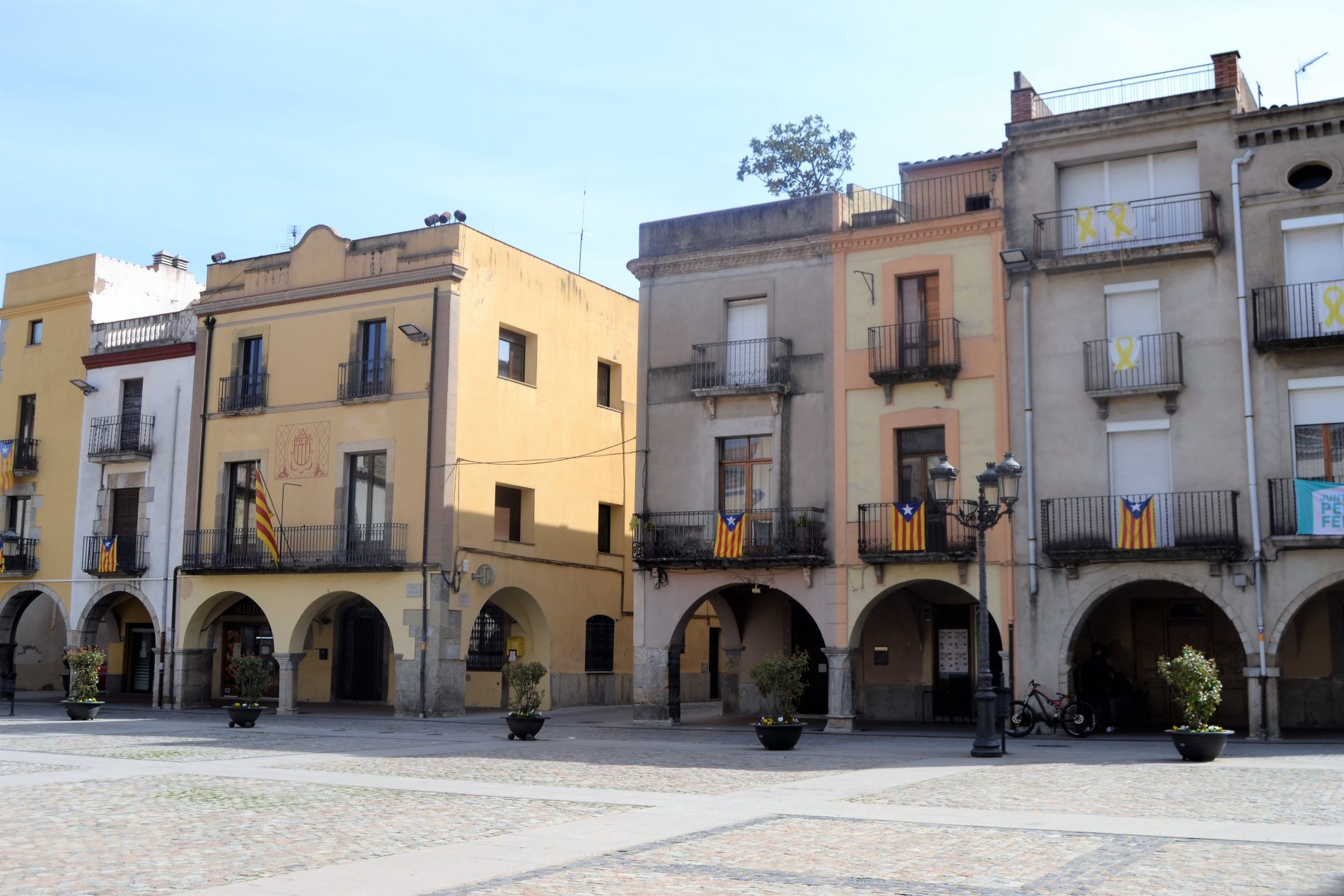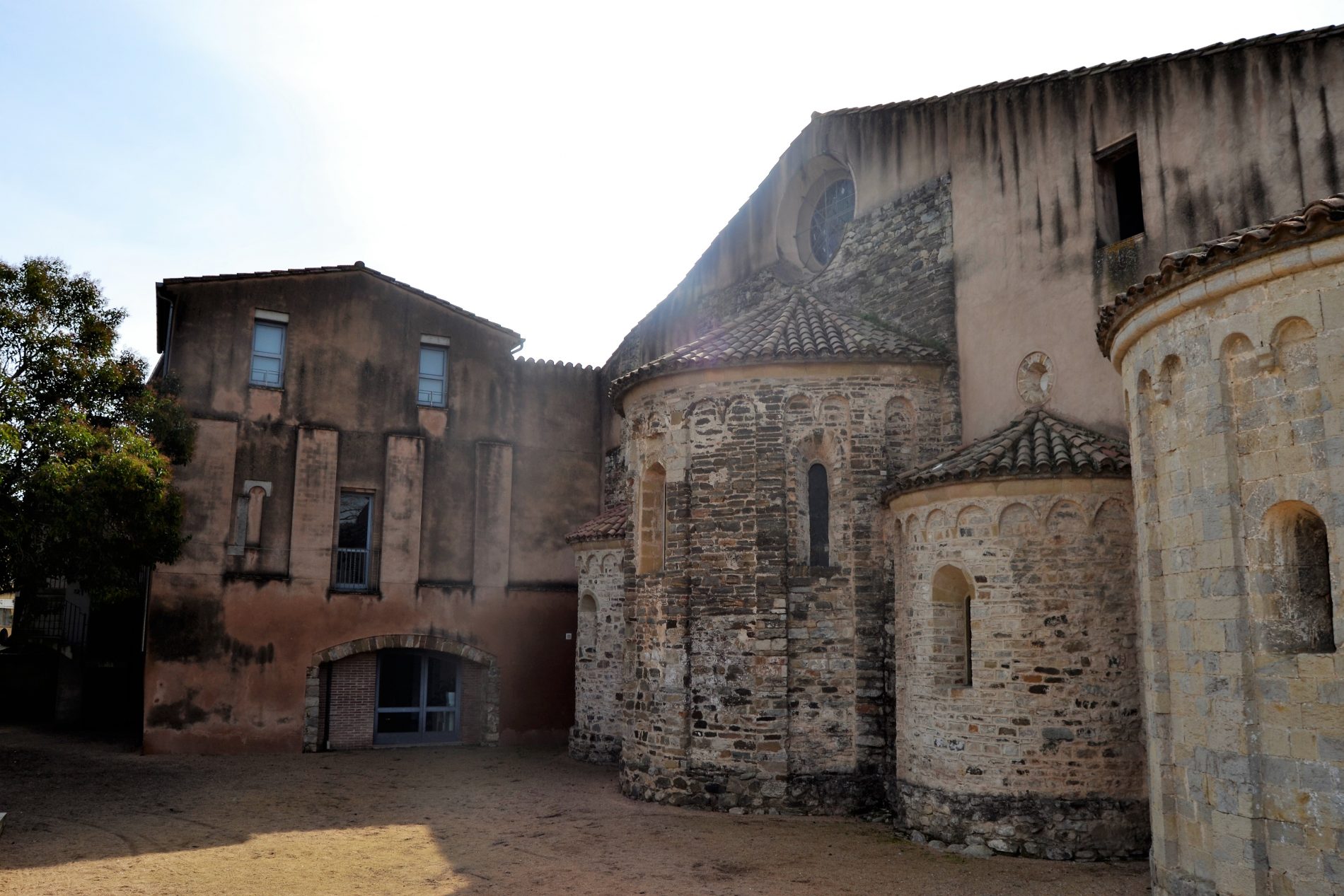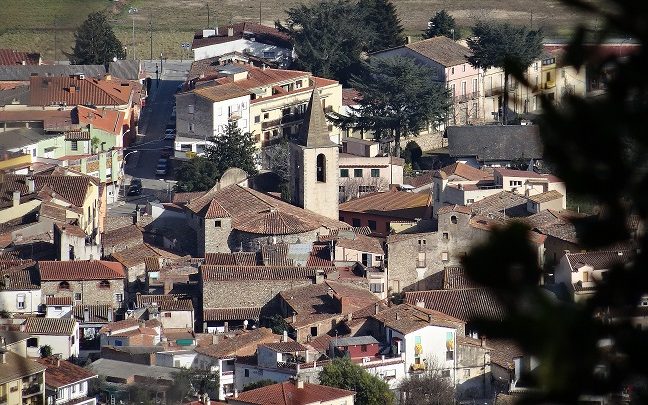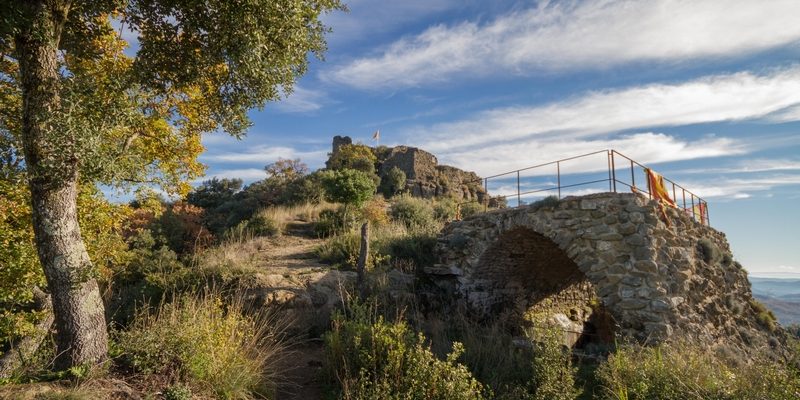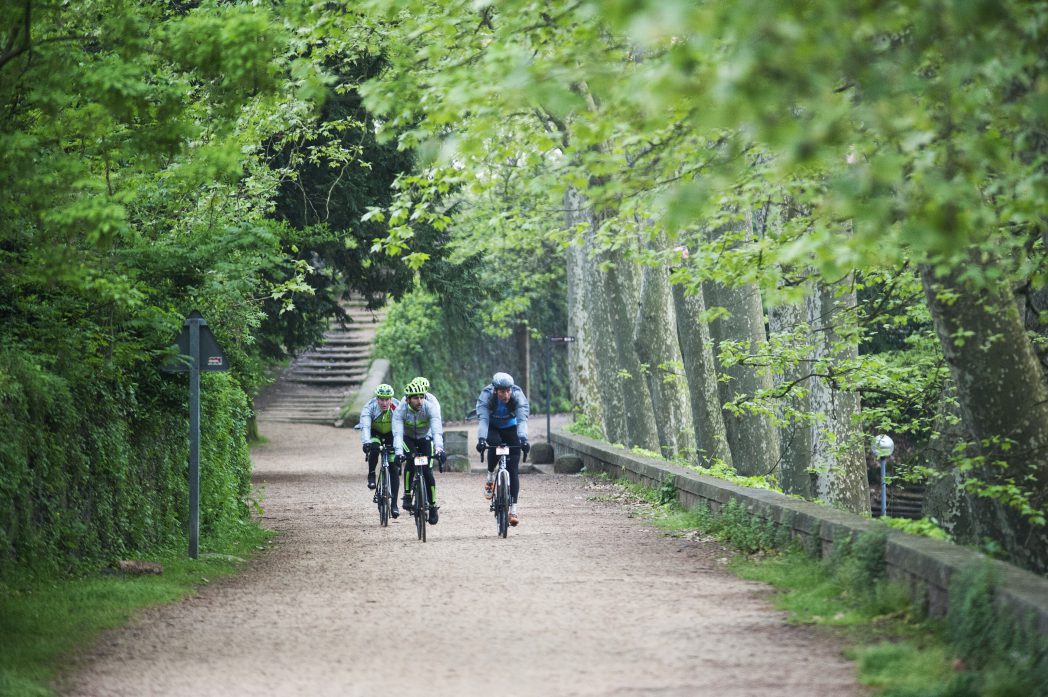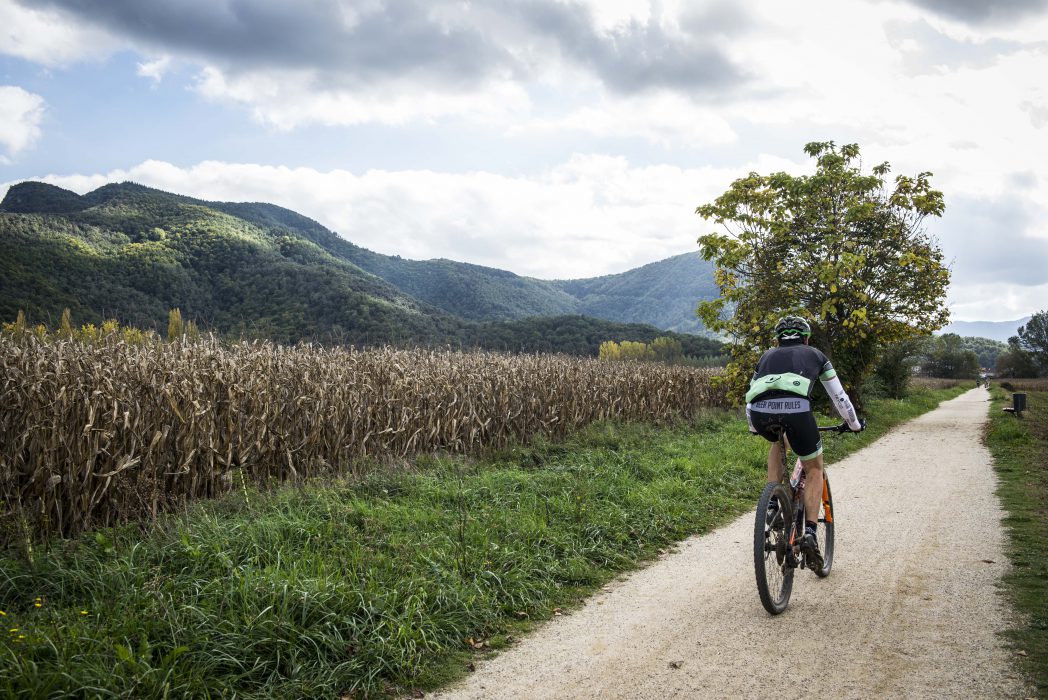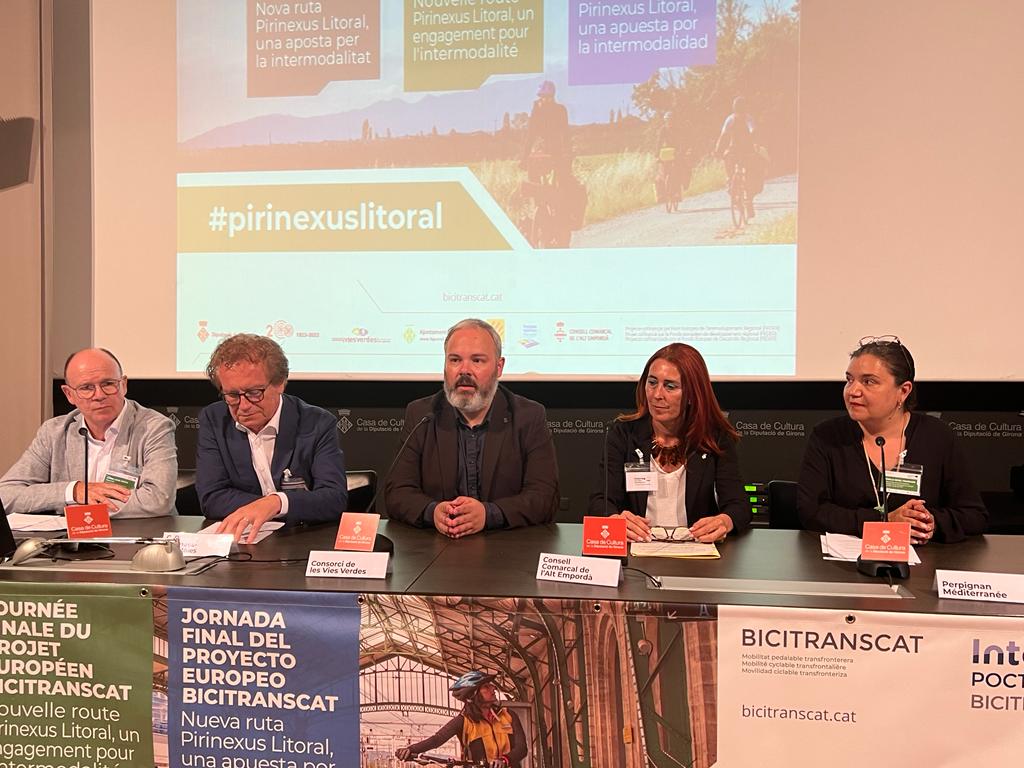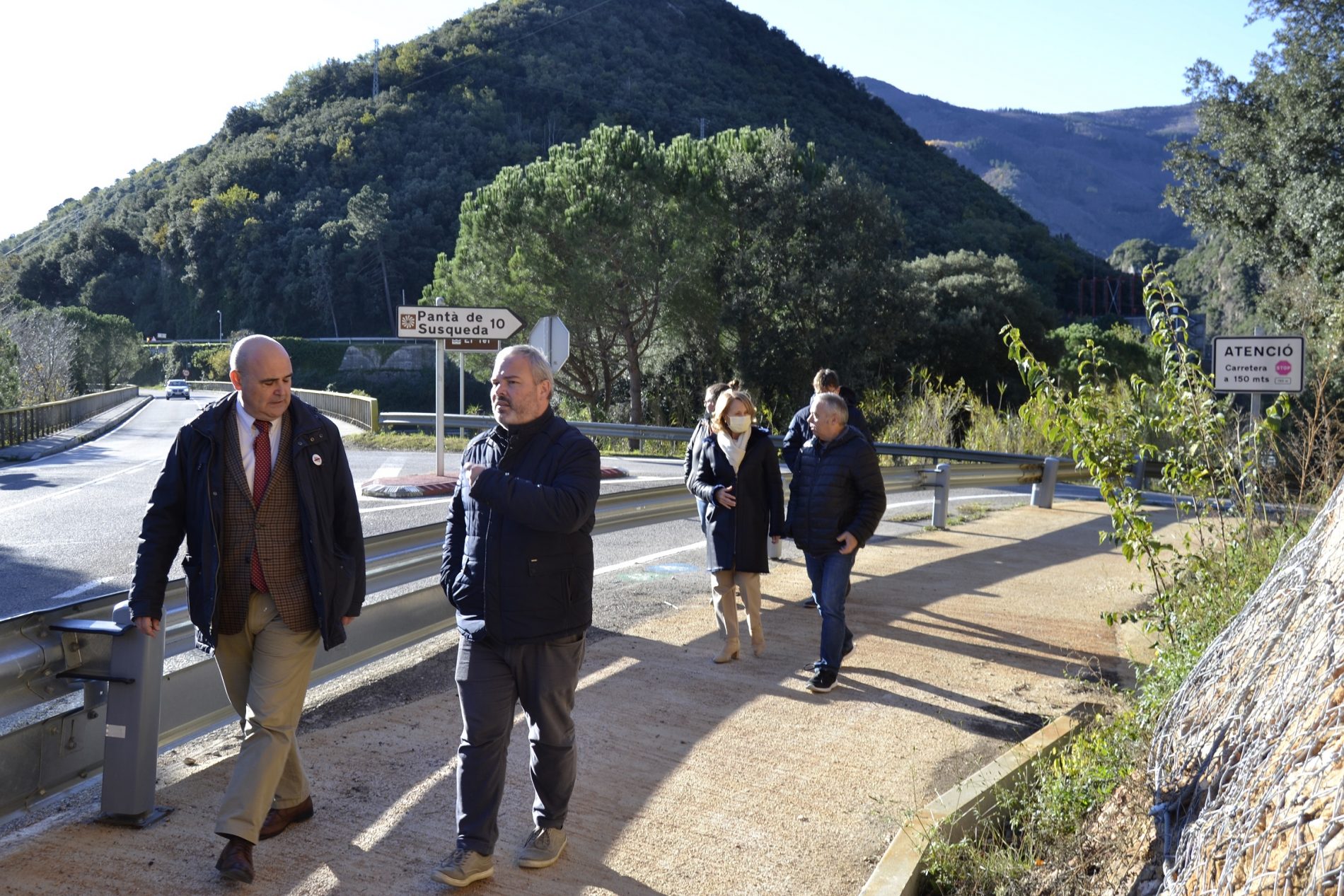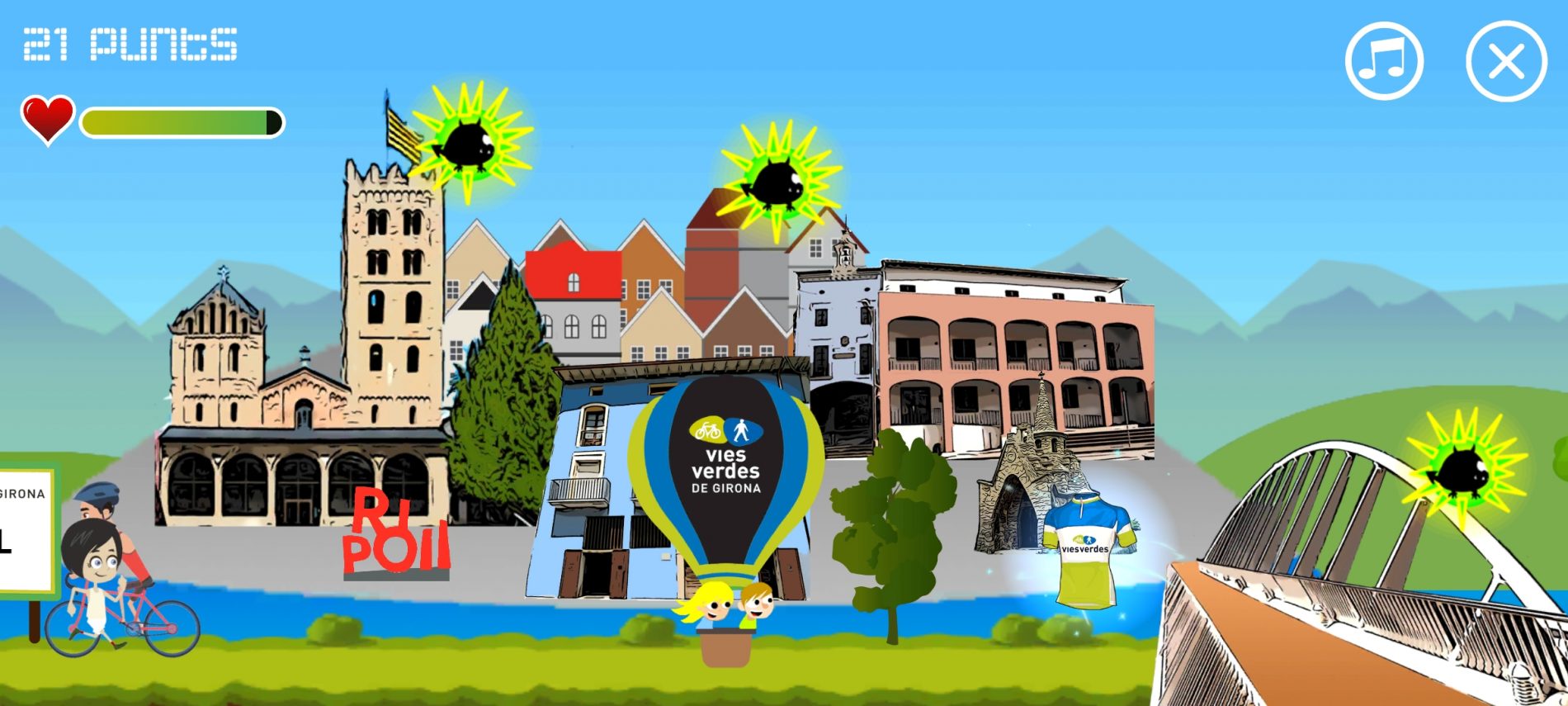The Secret of the Town of AMER
In the mid-10th century, in the high medieval period, Benedictine monasteries were founded in Catalunya Vella (‘Old Catalonia’) with the aim of repopulating and organizing this territory, which was a borderland at that time.
This is the case of Santa Maria of Amer. This monastery, like other monasteries of the period, saw a small nucleus of dwellings established under its protection during the 11th and 12th centuries, built around the parish church of Sant Miquel. At that time, there was no town as such, but rather a group of more-or-less urbanised houses, which depended, like the rest of the farmhouses around the monastery, on the parish of Sant Miquel.
It was not until the 13th century, during a time of peace and prosperity for commerce, that all the towns and cities of Catalonia experienced growth and were granted municipal charter. Indeed, this was also the case for the town of Amer, which developed around the market square, the current Plaça de la Vila.
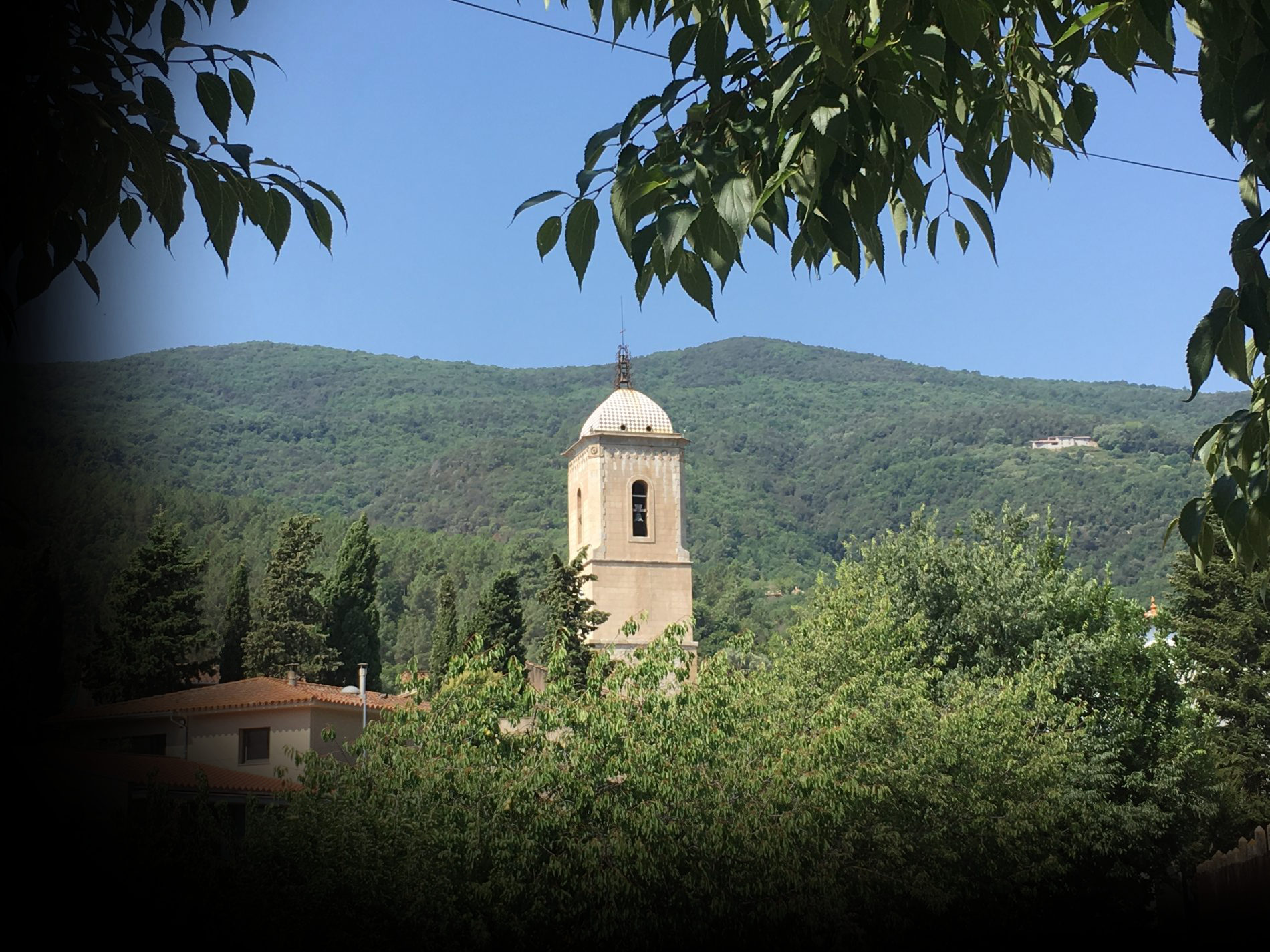
Kilometers 1,85 Km
Difficulty Minimum
Pavement Ruta urbana
Transport walk or bike
Secret type Medievals
Santa Maria of Amer
The monastery of Santa Maria of Amer was the religious and political centre of the whole valley of the River Amer, today the Brugent, and gave rise to the town of Amer, which was to grow under the protection and the control of the monastery’s successive abbots.
In 844, the house of Santa Maria near the River Amer, already appears mentioned in documents. It was a primitive cell, owned by the monastery of Sant Medir and Sant Genís, near Girona. This cell gained importance when, a century later, the monastery of Sant Medir was destroyed in the Hungarian invasions and the community moved to the valley of Amer.
The consecration of the church took place in 949. Over the years, the monastery expanded its holdings and its power over the territory, to become one of the most important abbeys in medieval Catalonia.
Of the old Romanesque-style monastery, only the church remains, and this has been absorbed into the urban fabric of the town and has buildings attached to it on both sides.
Plaça del Monestir
The old monastery of Amer was an autonomous entity, independent from the outside world, equipped with all sorts of facilities, some of which are found in this square. This is the case of the monastery’s old vestry, the place where all the items used in the ceremonies were kept and cared for. It is now the Ethnological Museum of Amer (Can Terme).
In addition, the monastery’s old infirmary and garden of convalescence can be found at the south-eastern end of the square. The position of nurse and the infirmary itself were created in 1252 in the monastery of Amer to take care of old or ill monks, for whom the Rule of Saint Benedict allotted a separate room, clean clothes, suitable hygiene and the food needed to improve and restore their health quickly.
In this same square there is a plaque to commemorate the signing of the Remença Commitment. This plaque commemorates the fact that on 8 November 1485, the representative of King Ferdinand II of Aragon, Íñigo López de Mendoza, signed the King’s commitment to arbitrate in the disputes between peasant serfs and feudal lords. This was to be an important step towards ending the war that was shaking the Catalan countryside, which was eventually wound up with the Arbitral Decision of Guadalupe (1486). Prior to this decision, in 1335, the Abbot of Amer had stopped exercising mals usos or ‘evil customs’ over the town of Amer. It ought to be borne in mind that since its foundation the monastery had been increasing its feudal power over the town. From the 13th to the 14th century, the monastery’s abbot exercised civil authority and had obtained notary privilege.
Plaça de Sant Miquel
The church of Sant Miquel used to stand in the place of this small square. This 12th-century Romanesque temple was the parish church of Amer around which the streets of the town were to grow.
The earthquakes of the 15th century destroyed the church of Sant Miquel, the monastery’s church, its cloister and a number of other houses in the town. Sant Miquel was rebuilt. However, two centuries later, in the context of the first Reaper’s War, in 1657 to be precise, violent clashes between peasants and Castilian soldiers took place in Amer, and Sant Miquel was destroyed again, definitively this time. Since then the church of the monastery of Santa Maria has been Amer’s parish church.
Carrer de Girona
Girona street coincides with the entrance to the royal road linking Girona to Olot that ran to the right of the River Ter as well as along part of the old road from Girona to Amer via Sant Gregori.
Amer, like many other small towns, had a hospital for the poor, which was maintained and managed by the town council and the town rector.
A hospital for the poor is known to have been founded in Amer in just 1325. With the great number of deaths in that same century, the number of bequests left to build a hospital in this town increased. The hospital was sustained thanks to charity and alms, and it hardly treated the sick, but rather took in homeless and marginalized people, abandoned children, soldiers and even new-borns left on its doorstep.
The hospital was also severely affected by the violent destruction of the church of Sant Miquel, but, unlike the church, it was rebuilt using charity, alms and the sale of inherited land.
Capella de la Pietat
The chapel of Our Lady of Piety of Pedreguet is a small 17th-century building which was renovated in 1844 and 1955. The 17th-century construction could potentially be a reconstruction of an older building which may have been Romanesque.
The chapel has a rectangular nave, a barrel vault roof, a west-facing semi-circular apse, a bell-gable on the façade and a porch with two sloping sides on the main façade. The outside has been rendered and painted white, with the exception of the lower parts of the façade’s stone corners and frames for openings.
This spot, located at the entrance to Amer on the road coming from Girona, was where the ecclesiastical authorities (that is, bishops and abbots) met, greeted each other and put on their pontifical robes before entering the town and entering the church ceremoniously. At present, it is still open for worship, albeit only sporadically.
Amer’s porticoed square
Amer’s Plaça de la Vila is the second largest porticoed square in Catalonia. It is a large rectangular square where the weekly market, now held on Wednesdays, has been held since medieval times. In fact, in the 12th century, which was a period of relative security and economic growth, a small-scale craft industry developed in Amer, and the town gradually became a centre of commerce with the establishment of the market. In the early modern period, this market was of great importance and attracted traders and visitors from all over the region.
The buildings still remaining in the square are of medieval origin, although they have been renovated since, mostly in the 18th and 20th centuries. The construction of the porticoes was carried out by each head of household individually, which explains why they were built in different styles over different periods.
Interestingly, the square’s cobbles come from different parts of Catalonia, because when it was urbanized, at the beginning of the 1980s, other municipalities were asked to collaborate. Each of those towns has a plaque with its name engraved on the square’s floor in appreciation.
One of the houses in the square was the old Duran Inn, behind which the stagecoach from Girona stopped. The railway did not reach Amer until the end of the 19th century; it was on the Olot-Girona route, which was in service for 75 years and has now been made into a greenway.

